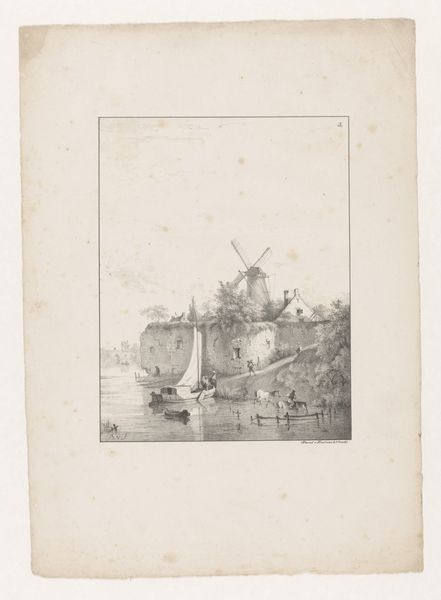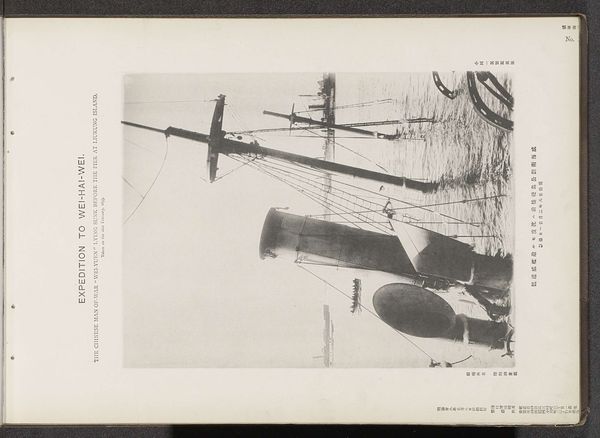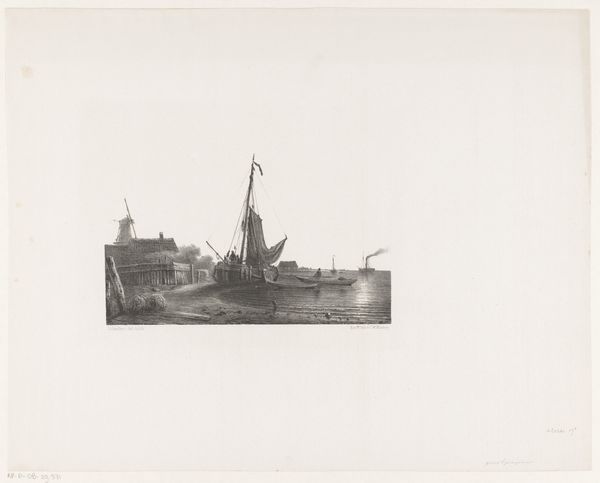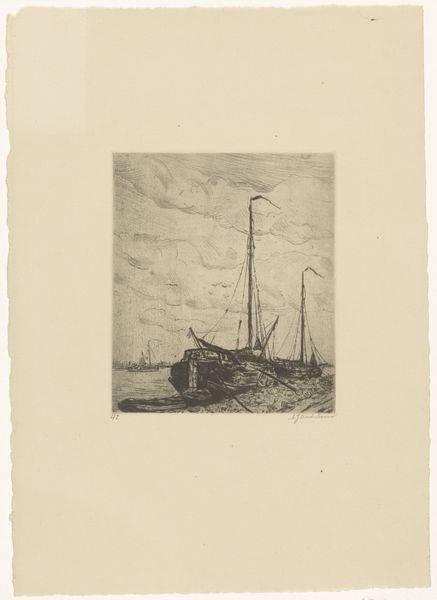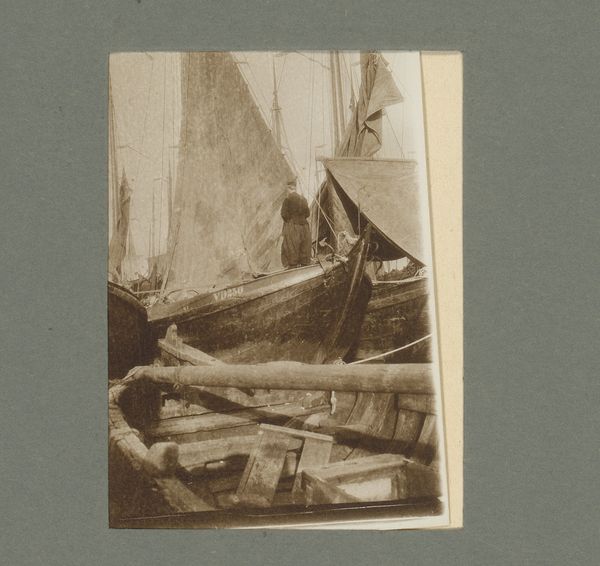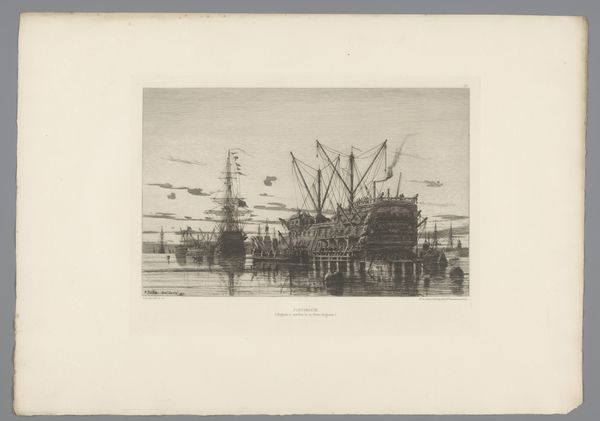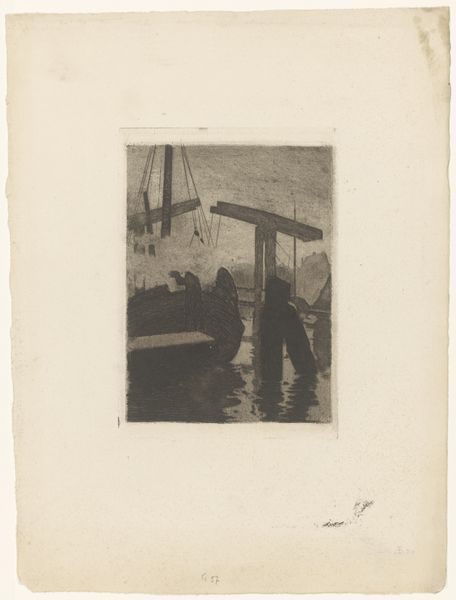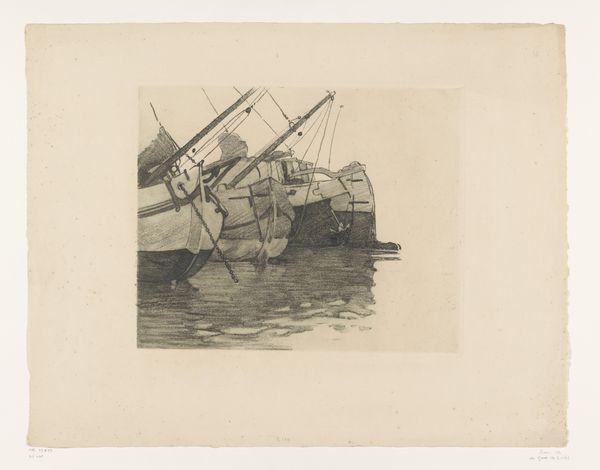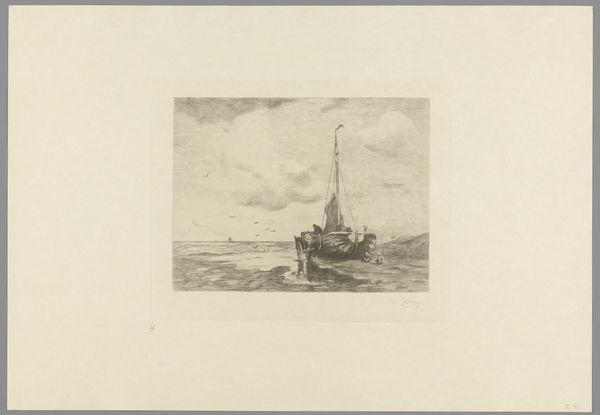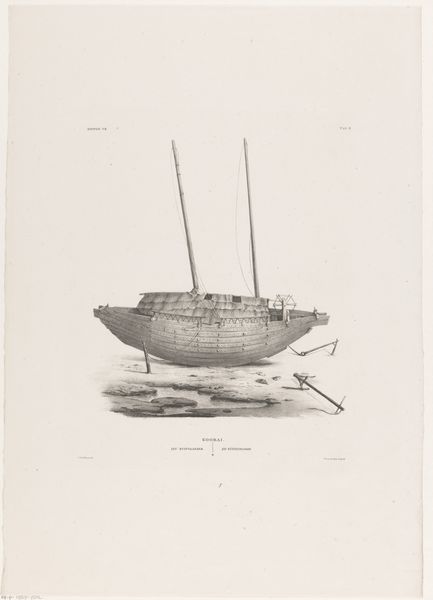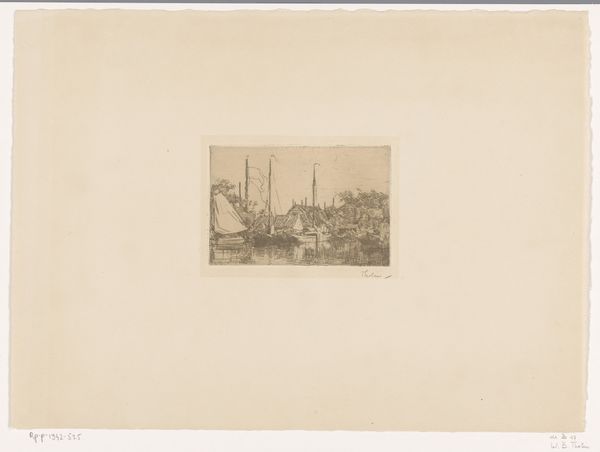
daguerreotype, photography
#
weapon
#
daguerreotype
#
photography
#
orientalism
#
sword
Dimensions: Image: 8 7/8 × 6 5/16 in. (22.5 × 16 cm) Mount: 12 5/16 × 18 11/16 in. (31.2 × 47.5 cm)
Copyright: Public Domain
Curator: This photograph by Maxime Du Camp, taken between 1849 and 1850, is titled "Armes et ustensiles du Kaire." It's a daguerreotype, a very early photographic process, and presents a still life arrangement. Editor: My first impression is one of faded grandeur. There’s something almost ghostly about the way these objects are captured—like echoes from another time, perhaps slightly melancholic? Curator: Well, that ghostliness comes, in part, from the daguerreotype process. Consider the labor: Each plate was painstakingly prepared, exposed, and developed. It demanded a meticulous hand. Editor: Right, a sort of crafted image making itself visible, yet almost shrouded in history. Look at the ornate detail of the weapons and smoking devices, laid upon the table—it conjures thoughts about trade, orientalism, even violence and leisure intermingled. Curator: Exactly! The arrangement presents instruments of both peace and war – hookahs and swords, implying a sophisticated culture. The very act of assembling these items, pointing the lens, underscores European fascination with the "Orient." Editor: I suppose I do feel this odd blend of fascination and perhaps something like appropriation coming into play. But the sepia tones also emphasize the handmade quality, the texture of the embroidered cloth under the objects adding another material dimension, softening things? Curator: Precisely. Note that the "Orient" was crafted through aesthetic consumption, available now to European eyes as something both authentic and exotic—through artifacts now readily available. It flattens nuanced cultures for the viewer. Editor: Perhaps! And you are right, there is the tension here, like a captured breath. For me, this photo still speaks of distant lands and stories, maybe because of, and not despite, the photographer's touch? Curator: The tension certainly lingers, it's that space between representation and the realities on the ground for the labor and populations who crafted these artifacts. It really does haunt us, in many ways. Editor: I agree entirely, a lot is at stake for such a muted photograph, now displayed thousands of miles from where the image began to breathe... A strange stillness with reverberations of what came and what is now yet to come.
Comments
No comments
Be the first to comment and join the conversation on the ultimate creative platform.
